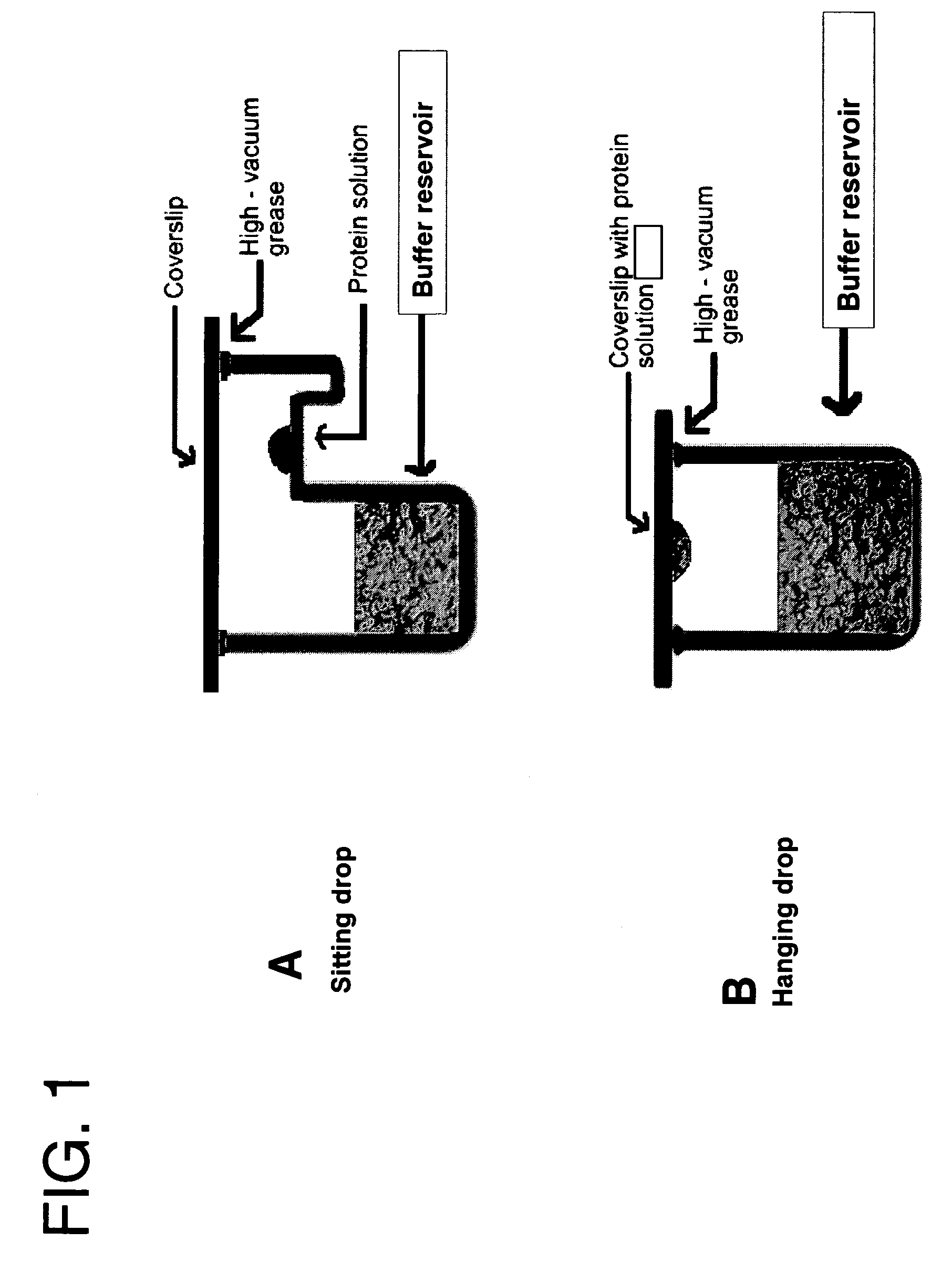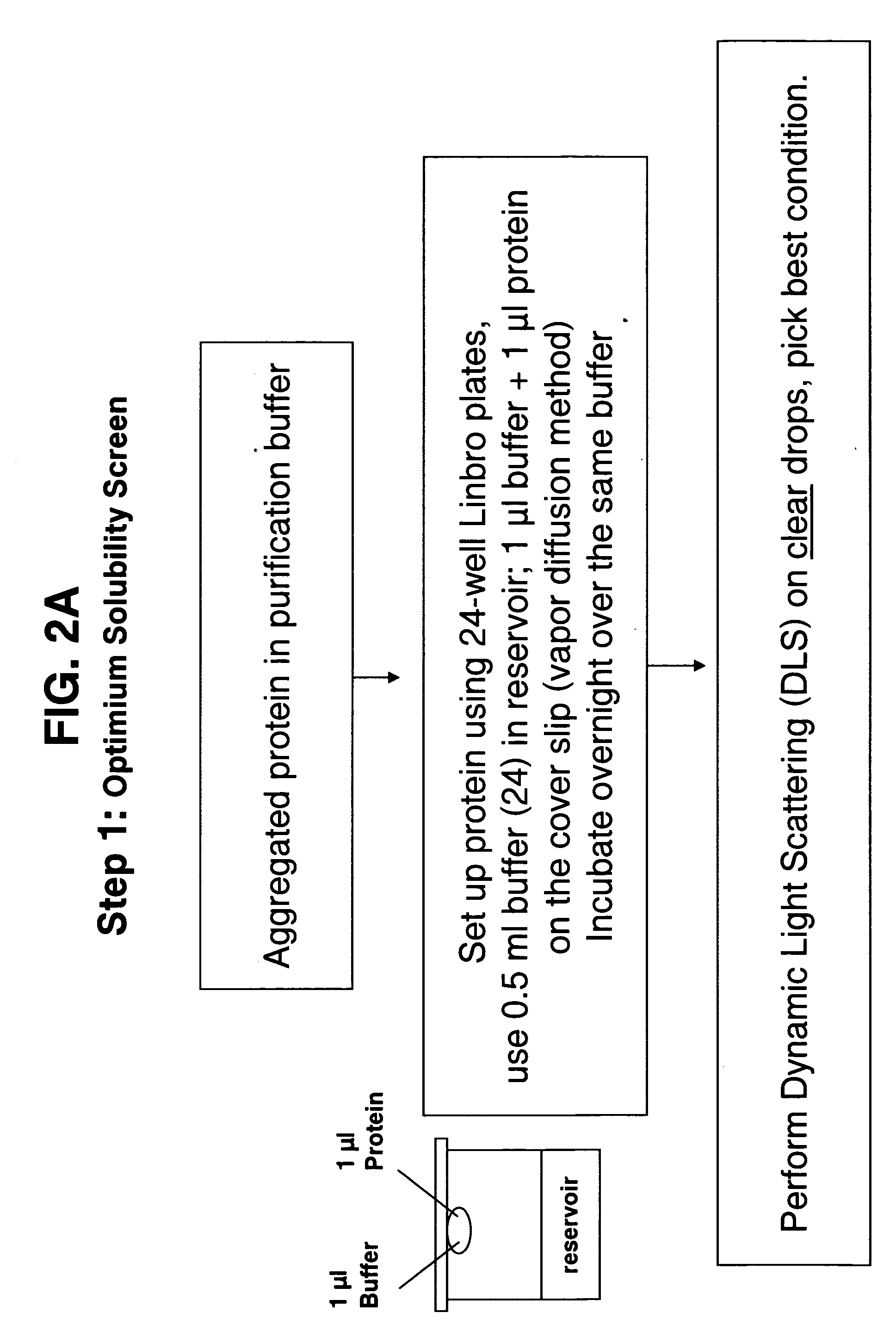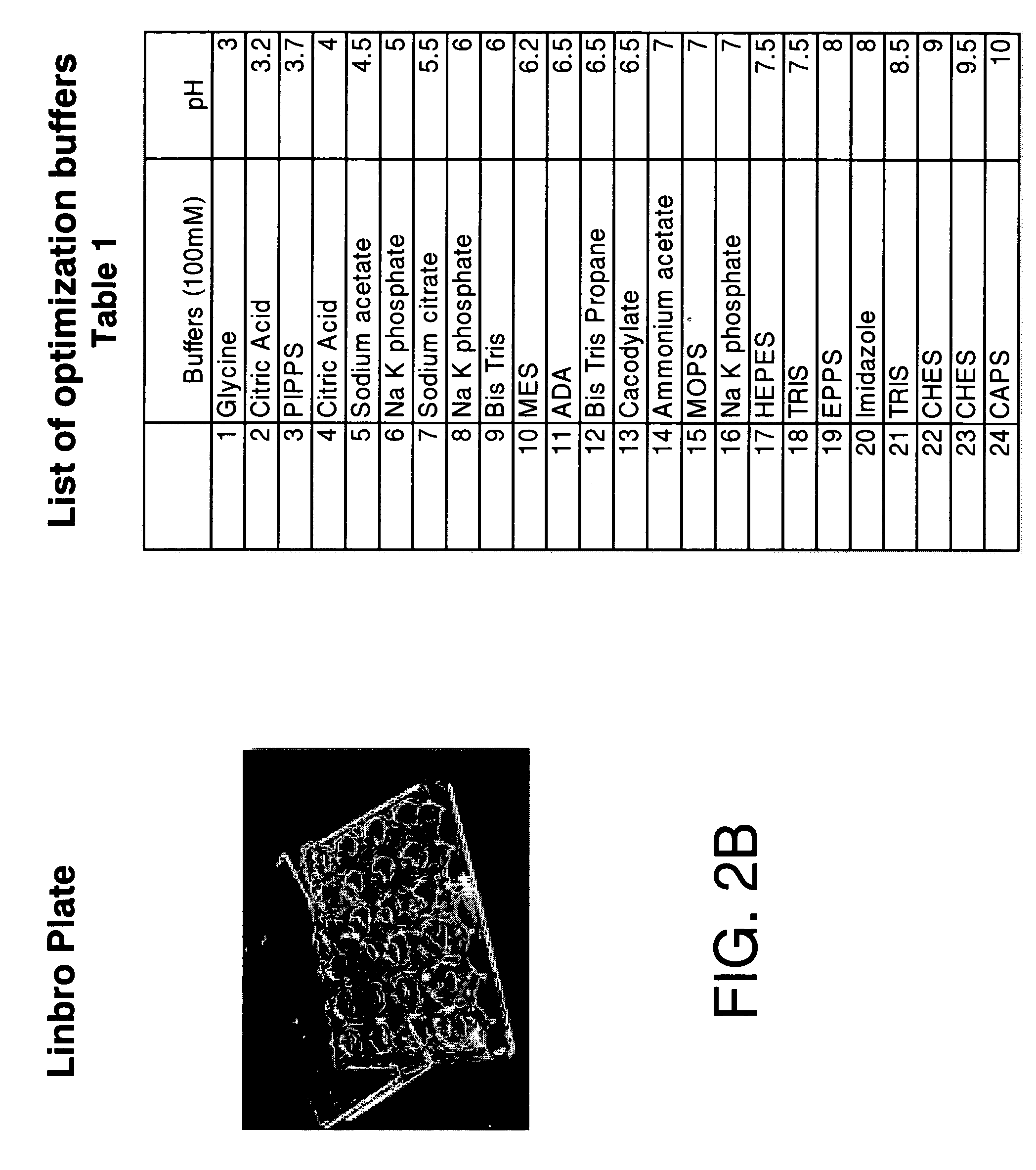High-throughput method for optimum solubility screening for homogeneity and crystallization of proteins
a protein and high-throughput technology, applied in chemical methods analysis, library screening, instruments, etc., can solve the problems of protein complex properties and unsatisfactory crystallization of proteins
- Summary
- Abstract
- Description
- Claims
- Application Information
AI Technical Summary
Benefits of technology
Problems solved by technology
Method used
Image
Examples
example 1
Protein 1371B and Other Proteins Crystallized by the Method
[0041] The OS screen has been performed on 14 samples that had aggregated as measured by DLS, had precipitated upon concentration or could not be concentrated. One of the proteins, his-tagged 1371B, was purified through a metal chelating column (HiTrap Chelating HP, Piscataway, N.J.) and Superdex 75 size exclusion chromatography (Piscataway, N.J.) column. The sample (20 mM Tris-HCl, pH 7, 0.3 M NaCl) could be concentrated to 27 mg / ml only upon removal of salt but the DLS showed high polydispersity. The protein underwent OS screen and some of the drops remained clear. But as shown in FIGS. 4a and 4b, although both buffers # 16 and 21 gave a clear drop, the sample was more monodisperse in Tris-HCl, pH 8.5, buffer. Even in this buffer, one could observe a higher molecular weight peak, so the Additive Screen was tested and 1% octylglucoside was shown to make the 1371B sample more monodisperse with a radius of 3.15 nm and 21% po...
example 2
Preparation of Protein Samples
[0044] The proteins that we have worked on are expressed from genes from Mycoplasma pneumoniae, M. genitalium or their homologs from other organisms. The protein identification numbers listed on Table 3 are targets from BSGC (URL:). These proteins have a his6 tag or a his6-Maltose Binding Protein (MBP)-Tobacco Etch Virus (TEV) protease cleavage site at the N-terminus. Purification for the proteins with a his6 tag involved an immobilized metal affinity column (IMAC) followed by either ion-exchange chromatography and / or size exclusion chromatography. For those proteins with a his6-MBP fusion, a TEV cleavage step was included in the purification protocol after the IMAC step.
example 3
Optimum Solubility (OS) Screen
[0045] A set of 24 buffers at a concentration of 100 mM with a pH range from 3 to 10 was prepared using Fluka chemicals (Table 1). The screening was done by pipetting 0.5 ml of each of the buffers into each reservoir of a 24-well Linbro plate. A 1 μl aliquot of protein solution (concentrated to as high a concentration as possible) was pipetted onto a siliconized glass cover slip and to it was added 1 μl of 100 mM reservoir buffer. A layer of silicone grease was applied to the top of each of the wells and the cover slips were then inverted and sealed onto each of the wells. The plates were incubated at room temperature for 24 hrs. During this period vapor diffusion takes place and depending on the stability of the protein in a given buffer, one can observe under a light microscope clear drops or drops with different degrees of precipitation. The protein concentration ranged from 3.0 mg / ml to 30 mg / ml.
PUM
 Login to View More
Login to View More Abstract
Description
Claims
Application Information
 Login to View More
Login to View More - R&D
- Intellectual Property
- Life Sciences
- Materials
- Tech Scout
- Unparalleled Data Quality
- Higher Quality Content
- 60% Fewer Hallucinations
Browse by: Latest US Patents, China's latest patents, Technical Efficacy Thesaurus, Application Domain, Technology Topic, Popular Technical Reports.
© 2025 PatSnap. All rights reserved.Legal|Privacy policy|Modern Slavery Act Transparency Statement|Sitemap|About US| Contact US: help@patsnap.com



